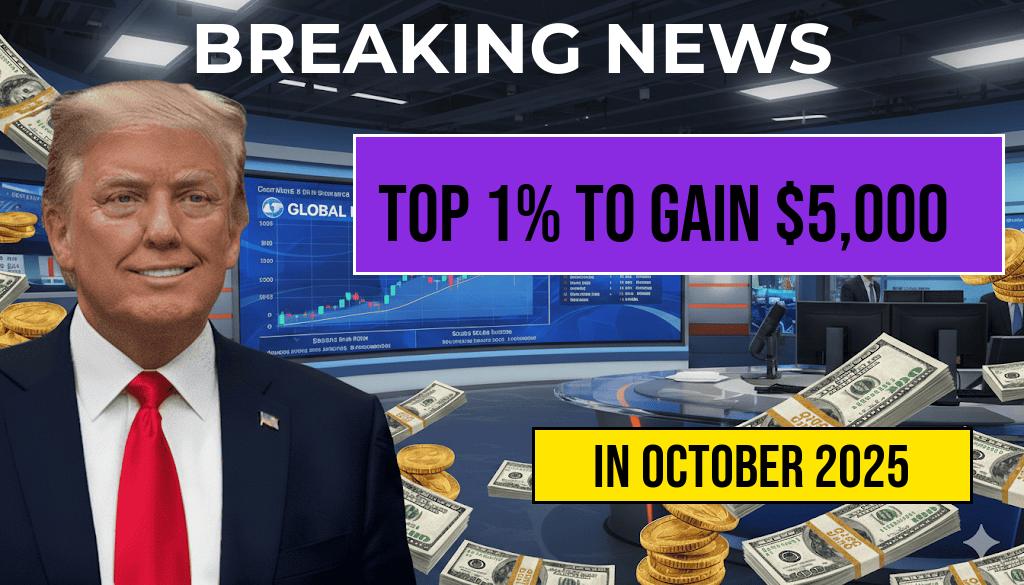The upcoming changes to the U.S. tax code are poised to significantly benefit the nation’s wealthiest households. According to recent analyses by financial experts and economic think tanks, the top 1% of Americans are projected to see an average net income increase of approximately $5,000 as a result of new tax reforms enacted earlier this year. This shift is primarily driven by adjustments in income brackets, capital gains tax policies, and deductions that disproportionately favor high-income earners. While the reforms aim to streamline taxation and promote economic growth, critics argue that such benefits may exacerbate income inequality. As policymakers and economists scrutinize the long-term implications, households in the upper tier of the income distribution are already experiencing tangible financial gains, contrasting sharply with the relatively modest adjustments faced by middle- and lower-income groups.
Details of the Tax Reforms and Their Impact on High-Income Earners
Key Provisions Favoring the Wealthiest
- Reduced Capital Gains Taxes: The reforms lowered capital gains tax rates for high-income brackets, encouraging investment income accumulation among the top 1%.
- Enhanced Deductions: High earners now benefit from increased limits on itemized deductions, allowing for greater tax sheltering of income.
- Income Bracket Adjustments: The income thresholds for the highest tax brackets have been expanded, enabling many top earners to remain in lower tax brackets despite rising incomes.
Projected Financial Gains
| Income Group | Average Net Income Gain | Percentage Increase |
|---|---|---|
| Top 1% | $5,000 | 2.1% |
| Next 9% | $1,200 | 0.5% |
| Bottom 50% | $50 | 0.1% |
Economists note that the $5,000 increase for the wealthiest Americans corresponds with improvements in investment returns and tax efficiencies, especially for those with diversified portfolios and substantial capital assets. This upward shift is less pronounced for middle- and lower-income groups, highlighting ongoing disparities in tax benefits across income levels.
Economic and Political Reactions
Supporters’ Perspective
Proponents of the reforms argue that simplifying tax brackets and reducing rates for high earners stimulate economic activity. They contend that encouraging investment and entrepreneurship among the wealthy can generate job opportunities and foster broader economic growth. Supporters also suggest that the reforms make the tax system more competitive globally, attracting foreign investment and maintaining the U.S. as a leading financial hub.
Critics’ Concerns
Conversely, critics warn that the benefits skew heavily in favor of the wealthiest, potentially widening the income gap and reducing federal revenue needed for social programs. They point out that the increased net income for the top 1% may not translate into broader economic benefits, raising questions about the fairness and sustainability of such policies. Several advocacy groups and economic analysts argue that the reforms could undermine efforts to address inequality and social mobility.
Potential Long-Term Effects and Broader Context
Impact on Federal Revenue and Public Services
Preliminary estimates suggest that the tax cuts for high-income households could lead to a short-term decrease in federal revenue, with projections indicating a decline of approximately $150 billion over the next decade. This reduction might constrain funding for public services such as education, healthcare, and infrastructure, prompting debates about fiscal responsibility and social equity.
Comparison with Historical Trends
Historically, tax reforms favoring the wealthy have been associated with periods of increased income inequality, as seen during the 1980s and early 2000s. The current reforms follow a similar pattern, emphasizing economic incentives for high earners while sparing lower-income groups from comparable benefits. Experts from institutions like the Congressional Budget Office (CBO) emphasize the importance of balanced policies that promote both economic growth and social fairness (CBO Report on Tax Policy).
Looking Ahead
As tax season approaches, financial advisors and policymakers continue to analyze the implications of these reforms. For high-income households, the immediate effect is a noticeable boost in net income, with many planning to increase investments or accelerate wealth transfer strategies. Meanwhile, advocacy groups remain vigilant, pressing for reforms that address income inequality and ensure sustainable funding for public needs.
Further legislative proposals and public debates are expected to shape the evolution of the tax landscape in the coming months, with the potential for adjustments based on economic outcomes and political priorities. Stakeholders across the spectrum will closely monitor how these reforms influence income distribution, federal revenue, and overall economic health in the United States.
Frequently Asked Questions
What is the main impact of recent tax reforms on the top 1% of Americans?
The recent tax reforms are expected to increase the net income of the top 1% of Americans by approximately $5,000.
How many Americans are projected to benefit from these tax reforms?
Approximately the top 1% of earners in the United States are projected to see a gain in net income due to the new tax policies.
What factors contribute to the expected income increase for the top 1%?
The income increase is primarily driven by tax cuts, changes in deductions, and adjustments in tax brackets that favor high-income earners.
Will the tax reforms affect income levels of middle or lower-income Americans?
According to the article, the income gains are concentrated among the top 1%, with middle and lower-income groups unlikely to experience significant changes.
When are these tax benefits expected to take effect?
The tax reforms are expected to be implemented in the current fiscal year, with the income gains for the top 1% anticipated to be realized shortly afterward.

Leave a Reply